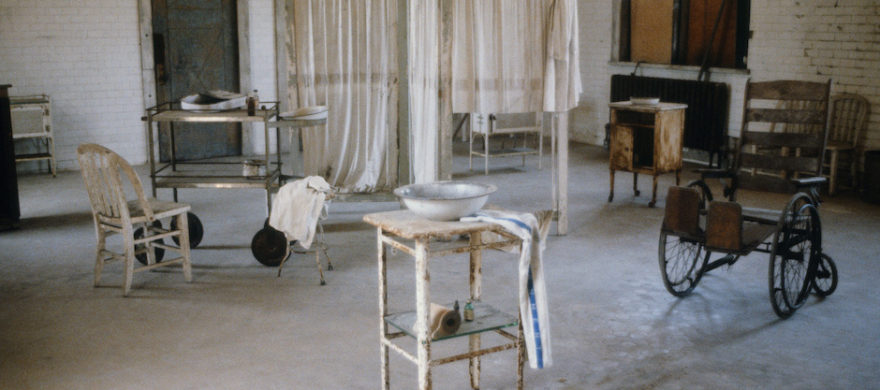
I spent most of third grade in the hospital and the rest of my life, up until now, trying to avoid going back to one.
Of course, anyone who has given birth in modern America or sat vigil next to a dying parent or a premature baby or explored the stark and sharply lighted and often overcrowded halls of an emergency room waiting for stitches on an arm, a forehead or shin has been in one. And, everyone probably feels the same way as I do–harboring the same repulsion for the place and forever grateful to have a first-rate one nearby.
But about that third-grade year…
It was a hot October afternoon and in a futile attempt to drum up some wind currents to cool off my scrawny self, I attempted a jump from my backyard swing. This idiot-proof physical activity resulted in a one-two mishap: First, my little frilly shorts caught on the swing’s chain where I dangled for a second or two before crumbling onto the dirt. My left arm bent underneath me. I loped inside to my mother, who was watching the World Series on TV, and she had to be convinced of my calamity’s severity. It took some doing on my part to persuade her that she had an emergency on her hands. Her lack of immediate concern was not because she was an unsympathetic mother. Not by any means. But, she was something of a rabid Giants fan, and for a few seconds it really felt to me as if I were on deck and not on home plate.
We scurried to the hospital, which was many miles away and in a different city than where we lived. I was sedated, the bone was set, and I was left to languish in traction for two excruciating weeks. This traction device was weighted downward from my left arm with what looked like a thousand garden rocks held inside a canvas tote. The upward tension was rigged up from bars above my bedframe. The whole contraption now seems as antiquated to me as if I had been subjected to cupping or leeches as a sound medical choice of treatment. I wish I owned a book on the history of bone setting. It might be titled, “Frontiers of Fracture Management.” Together, we might then know more about what midcentury bone-setting techniques were comprised of. One might now covet midcentury furniture in decorating the living room; but, believe me, the health care from the same period was anathema.
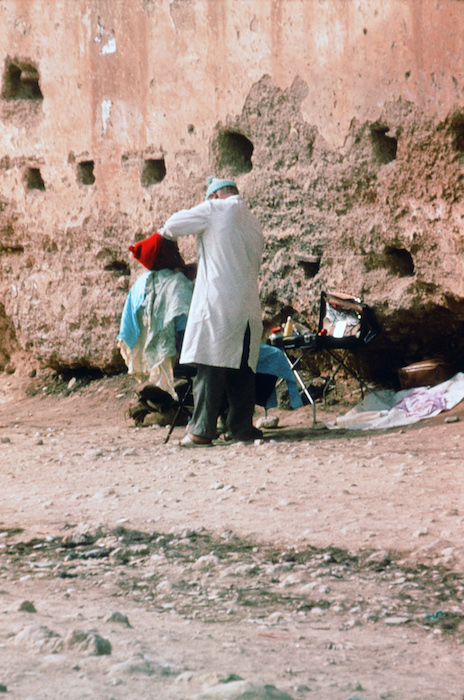
I was released to my own recognizance after a couple of weeks. I met a kid who was also stashed in the children’s ward. He, however, was no novice to institutional care. He was there when I arrived; he remained so when I waved goodbye. The nurse said he was a blue boy, which of course was ridiculous. He was the same color as me. It was the kid, himself, who at approximately my same age of 8 gave his disease a name: hemophilia. That was equally ridiculous because despite this label, he looked nothing like a reptile. But, he and I bonded over the quizzical choices the nursing staff made to amuse us children. Mostly, they chose an assortment of animals that were meant to calm, distract and hopefully comfort us. This same ploy would visit itself upon me again decades later when I found myself in a hospital after breaking my hip. All of sudden, in the middle of calling out for more pain meds, a golden retriever and its owner showed up—neither one harboring pain pills. I was not the least bit comforted by their visit.
But, at my young age in the children’s ward of the hospital, even my blue friend and I were not dumb enough to think that the porcupine now put in front of us was at all cuddly. Admonished by one of the nurses for not petting it, the blue kid started to cry and it seemed like such a subversive and successful tactic, I joined him in a concert of tears.
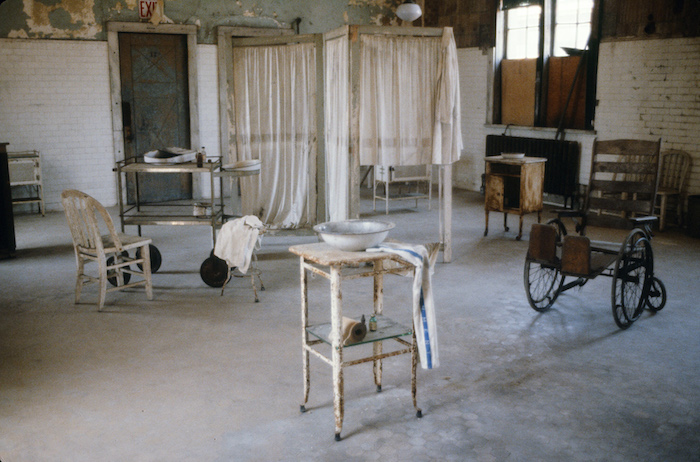
November rolled around and The World Series was now over. My mom returned to doting on me when she was at home. When she wasn’t, she was attending buying trips which meant that she was responsible for attending fashion shows in New York, Los Angeles, or San Francisco and procuring the next season’s saleable clothes to stock the yawning shelves of the small boutique she managed.
The days were closing in on Thanksgiving and darkness fell so early. In my memory of this incident, which was to change our lives forever, I don’t recall the sun shining at all that day. My mother was late in coming home. Alarmingly so considering my father was home, the nightly news on TV was over, and my usually placid and confident dad was pacing in front of door. There were, of course, no cell phones. But, he reached out to the hospitals and the police in a fruitless effort to glean some news about mom’s disappearance. Time was becoming a narrowing tunnel from which neither my dad nor I could emerge. When we heard the front gate clang shut around 9 p.m., I subsequently could now hear the slower-than-normal click-click of my mother’s high heels on the front brick path. The rhythm of her shoes hitting the ground was off somehow. It was the sound of hobbling. When she rang the doorbell instead of opening the door with her key, I scrambled to the door opening it up to a terrifying presence. My mother stood in front of me with bruises everywhere on her face; one eye was black and blue. Her coat was torn, and one shoe heel was broken off. Maintaining an eerie calm, she softly asked me to go find my dad. When he came to her side begging her to take his arm, he sternly asked me to call the neighbor. That seemed so silly to me because all we had to do was to bring mom inside, clean her up a bit, get her ready for bed, and pour her a whiskey. The usual whiskey in that fancy cut-glass highball glass always rinsed and ready in the dish rack. Let’s do what we usually do! This scene was impossible to process—to attach any sense to. She had been beaten but not by a mugger, but by the onset of heart disease. Her heartbeat’s irregularities caused her to collapse onto the unforgiving pavement somewhere downtown. I wondered, where do we go from here? The answer became obvious: She and my father went to the hospital. I stayed at the neighbor’s.
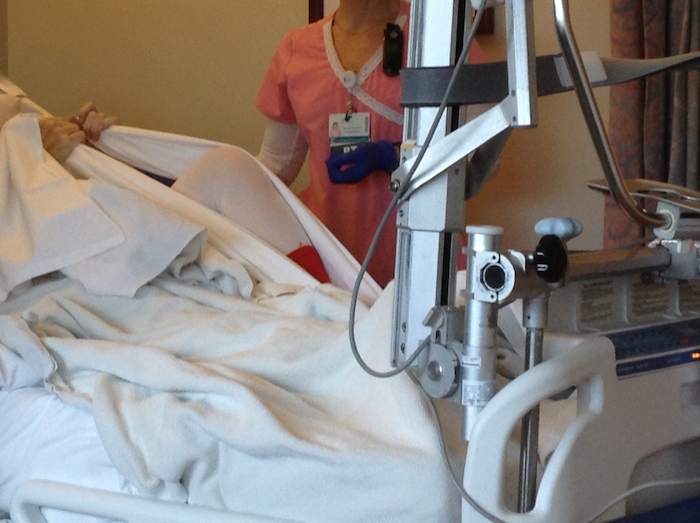
Equal to the antiquity of no cell phones was the state of medicine–especially with regard to heart disorders. I wonder if, in the Middle Ages, people then thought to themselves, “Sure it’s bad now but you should have seen it in the Dark Ages.” We just assumed the care my mom was receiving was state of the art. After all, we now possessed the detritus of modernity in our very own home: a color television, a portable television WITH A REMOTE CONTROL, and two cars—one with an automatic transmission. The refrigerator defrosted itself, for goodness sakes.
But, as days turned into weeks and my mother was still in the hospital, the doctors remained perplexed as to her diagnosis and my father was grasping at his now dual duties of breadwinner and child-care provider. He told me that I needed to think of a friend with whom I could stay for a few months and that every evening he would try and have dinner with me.
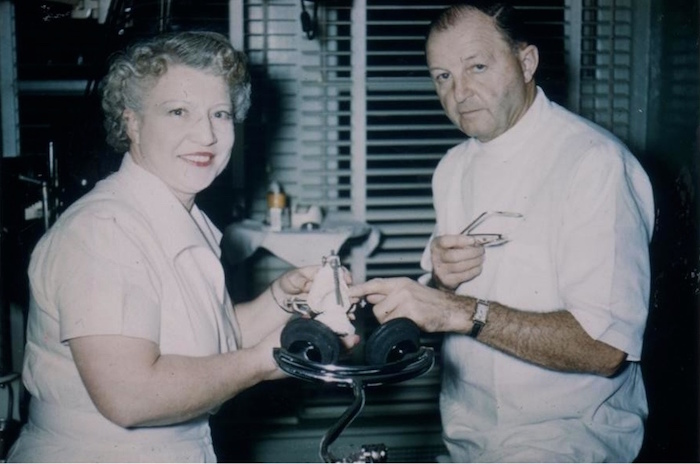
Tiny Karen was my third-grade buddy and my choice for this assignment. She met my criteria of consistent on-time school arrival and an awesome house in the hills. She also had no annoying siblings, which was as my own home environment was—placid, reliable, slightly boring. And, because my father was a man of his word, every evening he would pick me up at Tiny Karen’s and we would go to dinner. The only surprise to me on the first night of our new arrangement was that dinner would be in the lobby of Peralta Hospital. I don’t remember what my father ate; I devoured a tuna sandwich and a carton of chocolate milk…nightly for weeks.
The thing about children is that kids can pretty much get used to anything. New adjustments become normalized much quicker than is true for their sad-sack parents. Before long, I had my own nook in the lobby and was not unlike Eloise, the Kay Thompson’s character in the book by the same name, in exploring my new digs. But, while Eloise called the Plaza Hotel home, “For Lord’s sake,” I still called my exploration site, the hospital.
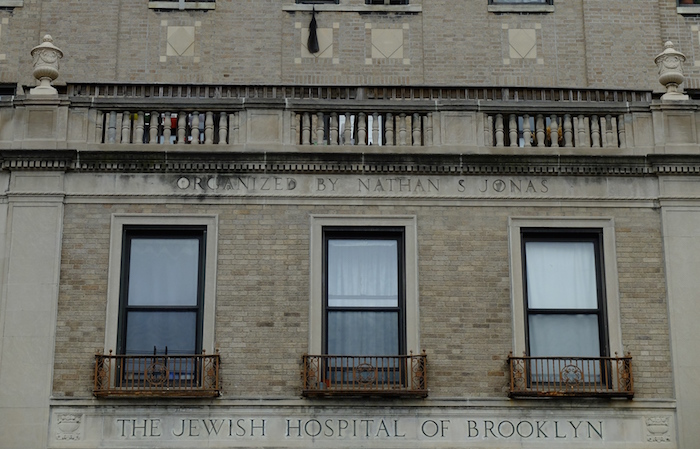
Weeks became months and my mother was not any closer to a diagnosis or to coming home. I saw her solely during visiting hours and those, for children, were only on the weekends. Something had to be done because the nurses could see that both mother and child were spiraling into that dangerous zone of hopelessness and sorrow. We missed each other, and I needed her for sustenance; she needed me to regain her health and to mend her heart.
A solution was found by one kindly nursing assistant who proposed the preposterous. I would climb into the laundry cart and be covered by sheets and towels. God knows if this laundry was coming or going, come to think of it now. This cart was just the perfect fit for a child of my size– my adult claustrophobic tendencies had yet to assert themselves. The plan was hatched and executed without dire consequences. Quite the opposite, in fact. After dinner in the lobby, I would see the cart and its driver rounding the corner. Hopping in for my nightly excursion, I would leap out of the heap of linens and find a corner to sit on my mother’s hospital bed. It was as close to heaven as a little girl and her mother could get.
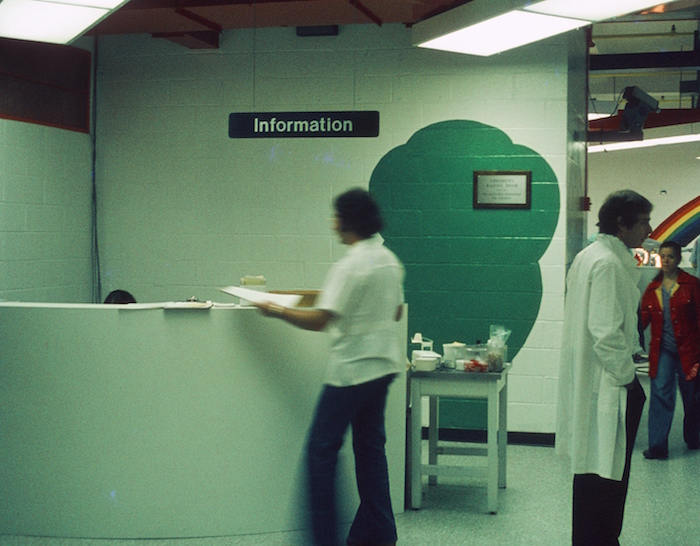
It was in the hospital, at my mother’s side, that she would tell me all about her daily viewing of the soap opera, “Love of Life.” Who needed a bedtime story at the age of 8?
Instead, my mother would quote the opening line of the show, “To live each day for whatever life may bring…this is Love of Life” and we would double over with laughter. I’m telling you, current reality TV cannot compete with the realistic plots of this or any soap opera. If my mom and I made too much noise, we were admonished by her clinical keepers and I was tossed back into the laundry bin and wheeled downstairs.
My mother didn’t live past my 13th birthday, and still Peralta Hospital became my home away from home. It was across the street from my father’s Oakland dental office, and he and I would often enjoy a quick bite of lunch at the café located on the street level of the building. They made a terrific tuna sandwich and my father would greet his colleagues and friends as the two of us sat on backless, metal stools at the lunch counter. It became a dining destination for us.
When I was 16 and had a terrible case of the flu, my father was again faced with the enormous task of how to care for a child as a single parent. He needed to work, and I couldn’t care for myself in my weakened and sick condition. So, he checked me into the hospital for a week where he could be relieved of his duties as a caregiver. After all, I was right across the street from where he worked and he could easily visit me without the indignity of climbing into a laundry cart.
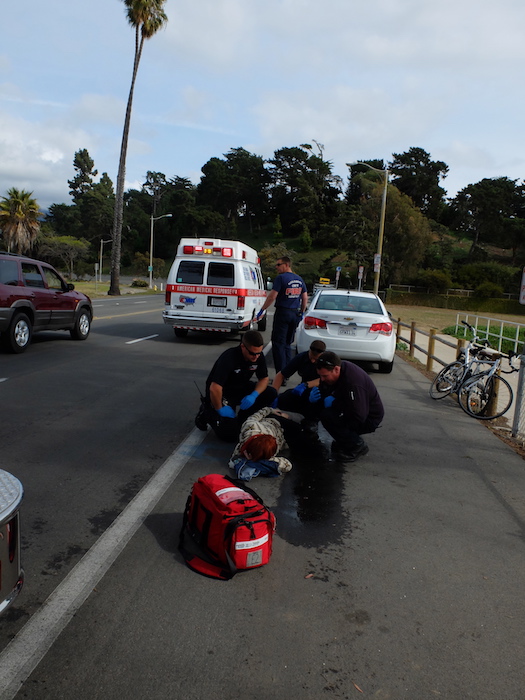
As it turns out, I’m headed to the hospital this week for a hip-replacement, and I am told that I stay one night—two if things get complicated. It’s of some comfort to me that the diagnosis is known, my husband can visit whenever he wants, and I have my own device for watching (and laughing at) any show I choose. I told my husband, though, to see if the hospital cafeteria serves a decent tuna sandwich. He promised me he’s up to the task.
Paging Dr. Kildare,
![]()


Hi Naomi,
By now you are home and beginning the journey of recuperation. I know from the email Marty sent that all went well with the surgery. This makes me smile.
Once you pass the 6 week mark, it is simply amazing how wonderful the new hip will feel.
I knew about your life story, of your mom passing at such a young age and how you and your dad “managed”. But, your ability to put words to paper brings it to life in a way that is rare and wonderful. Thank you for sharing. I have said it before and I will probably say it many more times, you are a gifted, gifted writer!
Please call me if you have any questions about how you are feeling, what you should be feeling, or not feeling. I wish I could be there for you. Just know, I’m wishing a a speedy recovery.
I’ll call you in about a week…want to give you some adjustment time. Take the pain killers. Sleeping was always the most difficult part for me. Hope you can rest comfortably.
Kisses. Doreen
Doreen!!!! It is so wonderful to hear from you and your encouraging words certainly make me feel even better. I would love to have a chat with you–comparing hips, of course. But, it will be lovely to catch up and talk about all things Doreen and Nomi.
I still remember the day you had your surgery and your sweet mom called me to let me know you were out of surgery and on your way to feeling relief. It’s good to be on this side of that operating room, right?
Brilliant, Naomi!! Loved every word. So envious of your entertaining writing style and eloquence. Sorry to hear about your hip replacement. Warmest wishes for successful surgery and rapid recovery…..and an abundance of yummy tuna fish sammiches!! Hugs and love ❌⭕️❌⭕️
Hi Alice, and thank you for taking the time to write a comment on this week’s post. Now, I realize that the entire family on Marty’s side uses the word, sammich! Who knew? Better than genetic testing to assure myself that you guys are all related! Love you! And, healing up just fine. Thanks for your concern. XO
Great story – thank you for sharing this! Good luck with the hip replacement t and hi to Marti
Anita
Hi Anita! So thrilled to hear from you after all this time and from such a far-away distance. Thank you for taking the time to read my post and for commenting too. Marty sends his best right back to you…when he’s not too busy with the demands this patient makes on him 🙂
Nomi….Thanks for sharing….so now what do you think of Obama Care ….after first hand (or leg or hip or what-ever) experience ?…. Doctor Steve
Dr. Steve, Obama Care? As long as I’m back on one piece, I’ve got no complaints. The “whatever,” just so you recall, was my hip. So far, so good!
I’m speechless and in tears, my sweet darling friend. I wish I was with you to give you a big hug and lots of kisses. Thanks to your Marty we know that all went very well with your op and that hopefully you only spent one night in hospital. I wish you a quick and painfree(?) recovery. The hugs and kisses will have to wait till next June in NYC where we will stroll and strut 5th Avenue together. Maybe a tuna sandwich in a fancy department store xxxxxxH
You’re blowing my mind! The thought of a tuna sandwich on 5th Avenue WITH YOU? Can it get any better?
Thank you for your beautiful comments on the blog. And, for your good wishes. Marty is a great nurse! His rates, however, are outrageous!
Classic, Naomi. Beautiful, sensitive and honest writing….oh, did I mention funny? I only knew the bare skeleton of that story. I’m sure you are healing well and will check in on you soon. If you want, I’ll bring over a tuna sando so you don’t have to wait til you go to NYC next.
Heal well, my buddy.
So fun to hear from you, Kit. And, even better than that: you liked it! I sure appreciate your good thoughts and I may take you up on the offer of a “sando.” I’ve never met a tuna sandwich I don’t like.
I’m getting used to this down time following surgery and find it rather relaxing…in a painful sort of way 😉 Love that you took the time to write!
Wonderful stories within stories, Naomi! I was spellbound ~ hope you are starting to mend & I look forward to seeing you once we return from SoCal! xoxoxo
Hi Susan. I am so happy to hear from you. Thanks for taking the time to read the blog and to respond. It means the world to me. Have fun with the family down south, and you can bet I’ll still be here when you return home. XO
Again, you make me smile with your post even if it’s about hip replacement surgery. Heal well and know that I’m thinking of you and wishing you a speedy recovery.
Jan, you’re the best. Today brought this lovely comment AND a get-well card from you too! You’ve nailed it: lovely, supportive friend. I sure appreciate your reading and responding to the blog. It means a lot to hear from folks, as I’ll bet you can imagine. I hope you had a lovely summer, Jan! I’ll bet the fall means a lot of help from Grandma and Grandpa. Busy, busy time. Take care. XO Naomi
From tears of sadness to tears of laughter… once again you touch the heart of even a most cynical reader. Tuna and chocolate milk maybe. Golden retriever? Where are the comfort cats?
Ha! Comfort Cats…there’s an idea whose time has come!
Thank you for reading and commenting on this blog, Valerie. You know how much it means. XO
I’m so happy to hear that you are healing well and that your surgery was so successful. The story you write about your mother is very moving. I can only imagine the pain and sadness that you experienced at such a tender age. xoxo steve
Thank you for your kind message, Steve.
Naomi,
You sound good in a very healthy way. I’ve been thinking about you since I spent
Sunday volunteering in my girl friend’s (Judy) yard. You were right about getting garden gloves. I did not need the Motrin. We accomplished a lot and had a good time. Judy showed me the gift coupon I gave her. It was for 3 (not one but three) garden work days. I must have been high when I created that coupon.
I truly enjoy reading the Coffee Blog. You have a talent. Please continue the charming work.
How great to hear from you. And, no blisters on your gardening hands. Impressive. Probably just good old dirt under your fingernails?
As for two more days work you owe your friend, have you considered moving? Witness protection program?
Thanks for reading the blog and sending the encouraging comments about it. And, your visit the other day meant the world to me and to “scooter man.” XO
Naomi, I finally had the time to read your most recent posting. I so love your writing. The pictures you paint are so heartfelt. It was great to see you this past week and know how well you are healing up !! Hope to see you again soon! Sending hugs !
Joanie! There is nothing better than reading such a lovely comment from you about this past week’s blog. I am thrilled you read it…even more thrilled that you enjoyed it.
Absolutely! Let’s get together again soon. You are like a dose of good medicine 😉 Go Giants! XO N
Hi Naomi,
I read this, mesmerized, as soon as you posted it but haven’t had a moment to write. I am moved by how you have plumbed the depths of such painful as well as joyful experiences, with humor and what must be an incredible trust in the world. I hope that this writing contributes in some measure to your healing at the hands of Nurse Marty; the pleasure you bring to all of us is immeasurable. Much love, S.
Hey, birthday girl! You gave ME a present by writing this beautiful comment. Thank you for brightening my site with your words of encouragement and support. Hope you got to the beach to dip your toes into the wild Pacific shore. See you soon! XO